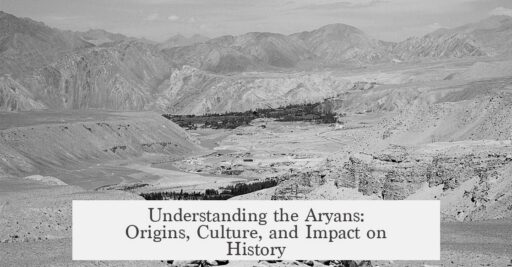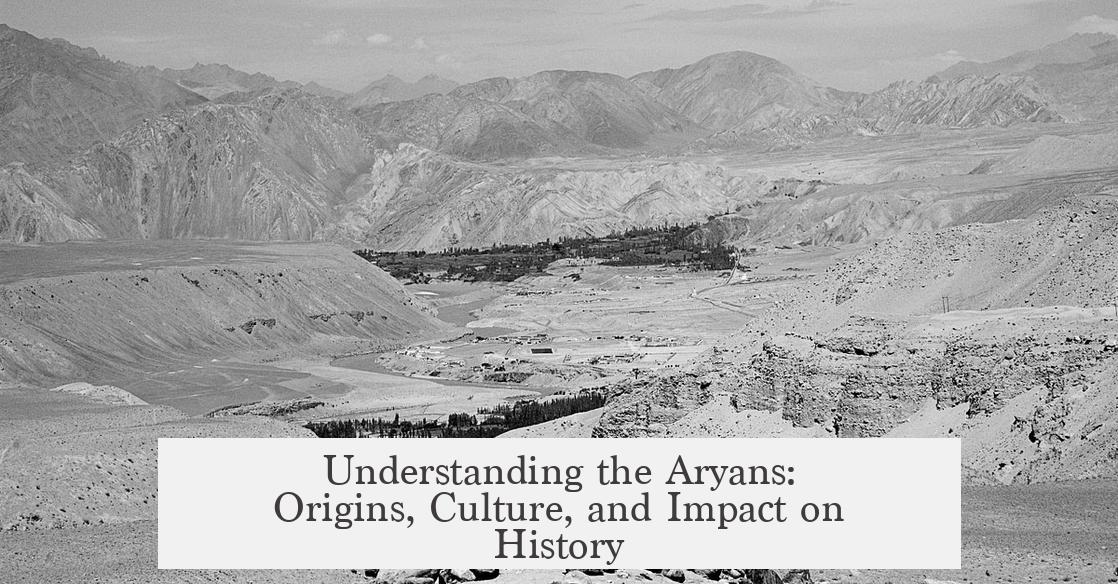The Aryans were an ancient ethno-cultural and linguistic group who identified themselves as “Arya,” meaning “noble” or “free.” This identity is specifically linked to the Indo-Iranian peoples, ancestors to the Iranians and Indo-Aryans, rather than a distinct racial category.
The term “Aryan” traces back to the ancient Sanskrit word ārya and the Avestan equivalent Airya. These terms referred to a community that viewed itself as culturally and linguistically distinct from neighboring peoples, whom they described as non-Aryan (an-āryā). The word gained prominence in European scholarship during the late 18th century, when linguists like William Jones noted striking similarities between Sanskrit, Ancient Greek, and Latin languages, suggesting a common ancestral language and culture now known as the Indo-European family.
Initially, India was considered the origin of the Aryans, prominently due to the Rig Veda—one of the oldest texts containing references to an Aryan culture. However, linguistic and archaeological research, particularly the Kurgan Hypothesis, shifted scholarly consensus toward the Pontic-Caspian Steppe region (modern Ukraine and southwestern Russia) as the Indo-European homeland between 4000 and 2500 BCE. The Aryan identity specifically emerges as part of the Indo-Iranian language branch emerging around 2500–1600 BCE north of the Caspian Sea.
The Aryan migration into the Indian subcontinent occurred around 1500 BCE. They crossed the Hindu Kush and introduced early Vedic religious practices. This migration influenced the cultural, social, and religious landscape of northern India. At their arrival, indigenous peoples such as the Dravidians inhabited the region with established urban and agricultural practices. The Aryans gradually expanded their influence, primarily over northern India, while many Dravidians moved southward.
The Aryan self-designation encompassed language, religion, and culture rather than race. Rigvedic and Avestan texts emphasize linguistic and ritual unity, clearly distancing themselves from the concept of biological racial superiority. The Aryans identified their group through shared ethnocultural traits and religion rather than physical characteristics.
Physical appearance of the Aryans varied significantly. Archaeological evidence indicates diverse traits within ancient populations, including varied hair colors and skin tones. Historical and genetic studies reveal that populations living in Central Asia, the Eurasian steppe, and surrounding regions were ethnically diverse. The common but mistaken notion that Aryans were uniformly fair-skinned or blond is unsupported by evidence and now considered a myth.
In the 19th century, European scholars misapplied “Aryan” to construct a racial ideology that claimed Aryans were a superior race. Arthur de Gobineau and others propagated this view, which the Nazi regime later adopted for its doctrine of racial supremacy. This ideology led to discriminatory laws and horrific atrocities during World War II. Modern scholarship firmly rejects racial interpretations of “Aryan,” focusing instead on its linguistic and cultural meanings within Indo-Iranian history.
Archaeological cultures associated with the Indo-Iranian Aryans include the Sintashta culture (circa 2100–1800 BCE) on the Eurasian steppe near the Ural Mountains, and the Andronovo culture in southern Central Asia. These cultures correspond to the period of Aryan linguistic and cultural consolidation before dispersing into regions such as South Asia and Iran.
By 500 BCE, the term Arya and its variants remained in use across regions of Iran, Central Asia, and India. Ancient Persian inscriptions and Avestan texts reflect a common ethnic identity among Iranian peoples, paralleling references in Sanskrit literature. This shows continuity in the Aryan identity as a cultural and linguistic marker rather than a strict geographic or racial label.
| Aspect | Details |
|---|---|
| Origin of Term | Derived from Sanskrit “ārya” and Avestan “Airya,” meaning noble or free |
| Historical Homeland | Pontic-Caspian Steppe region (~4000-2500 BCE) |
| Migration | Into Indian subcontinent ~1500 BCE; also southwestern Asia (Mittani kingdom) |
| Linguistic Identity | Indo-Iranian branch of the Indo-European languages |
| Cultural Identity | Defined by language, religion, and ritual practices |
| Physical Appearance | Diverse traits; no fixed racial characteristics |
Understanding the Aryans requires distinguishing historical facts from later ideological distortions. The Aryan identity is fundamentally a cultural and linguistic concept specific to ancient Indo-Iranian peoples. It is not a racial category, and modern research rejects racial supremacist narratives.
- Aryans were an Indo-Iranian ethno-cultural group self-identifying as “Arya.”
- The term originates from ancient Sanskrit and Avestan languages meaning “noble” or “free.”
- They migrated from the Pontic-Caspian Steppe into South Asia around 1500 BCE.
- Their identity is primarily linguistic and cultural, not racial.
- 19th- and 20th-century racial theories about Aryans have been debunked by modern scholarship.




